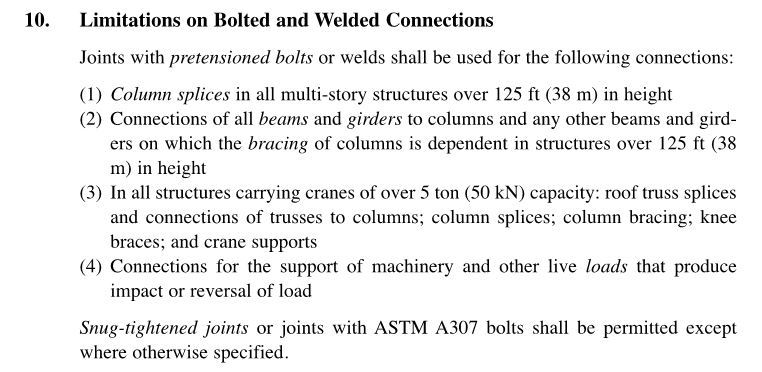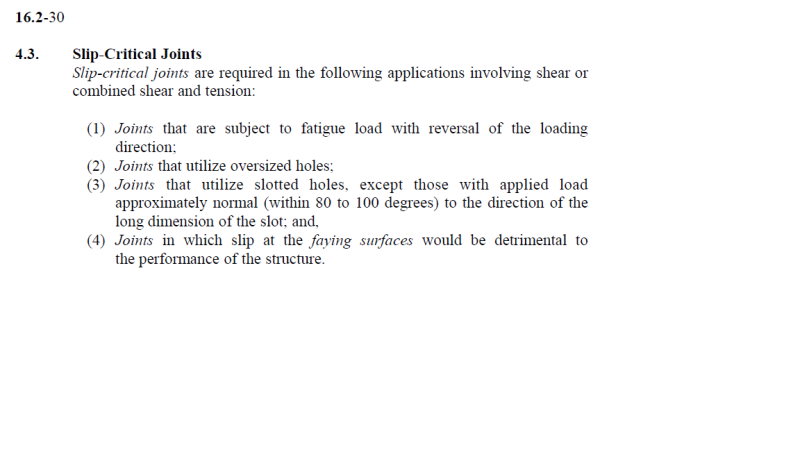Ron
Structural
- Sep 24, 1999
- 16,336
AISC says that if there is a significant stress reversal, the connection should be designed as slip critical. This is clear for connections that have wind uplift reversing gravity loads; however, should this also include lateral force reversals such as for shear walls? I have my thoughts on this, what are yours?





![[idea] [idea] [idea]](/data/assets/smilies/idea.gif)
![[r2d2] [r2d2] [r2d2]](/data/assets/smilies/r2d2.gif)

